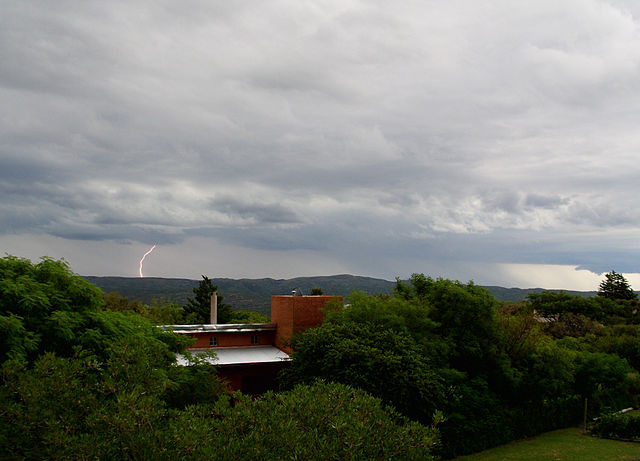The climate of Argentina varies from region to region, as the vast size of the country and wide variation in altitude make for a wide range of climate types. Summers are the warmest and wettest season in most of Argentina except in most of Patagonia where it is the driest season. Warm in the north, cool in the center and cold in the southern parts experiencing frequent frost and snow. Because southern parts of the country are moderated by the surrounding oceans, the cold is less intense and prolonged than areas at similar latitudes in the northern hemisphere. Spring and autumn are transition seasons that generally feature mild weather.
Tierra del Fuego National Park during winter
Jacarandas in bloom at Plaza Miserere, Buenos Aires
Thunderstorm in Córdoba Province during summer
Autumn in Bariloche
Servicio Meteorológico Nacional (Argentina)
The National Weather Service is an Argentine government agency under the Ministry of Defense that is tasked with observing, understanding, and predicting the weather and climate in Argentina and its surrounding waters. It provides weather forecasts, radar images, ozone, temperature and rainfall graphs, and satellite images. The purpose of these tasks is to contribute to protection of its inhabitants, sustainable economic development and to provide representation of Argentina to international meteorological organizations.
SMN headquarters in Buenos Aires
SMN station in Córdoba Province
Coverage of the nine VAAC







